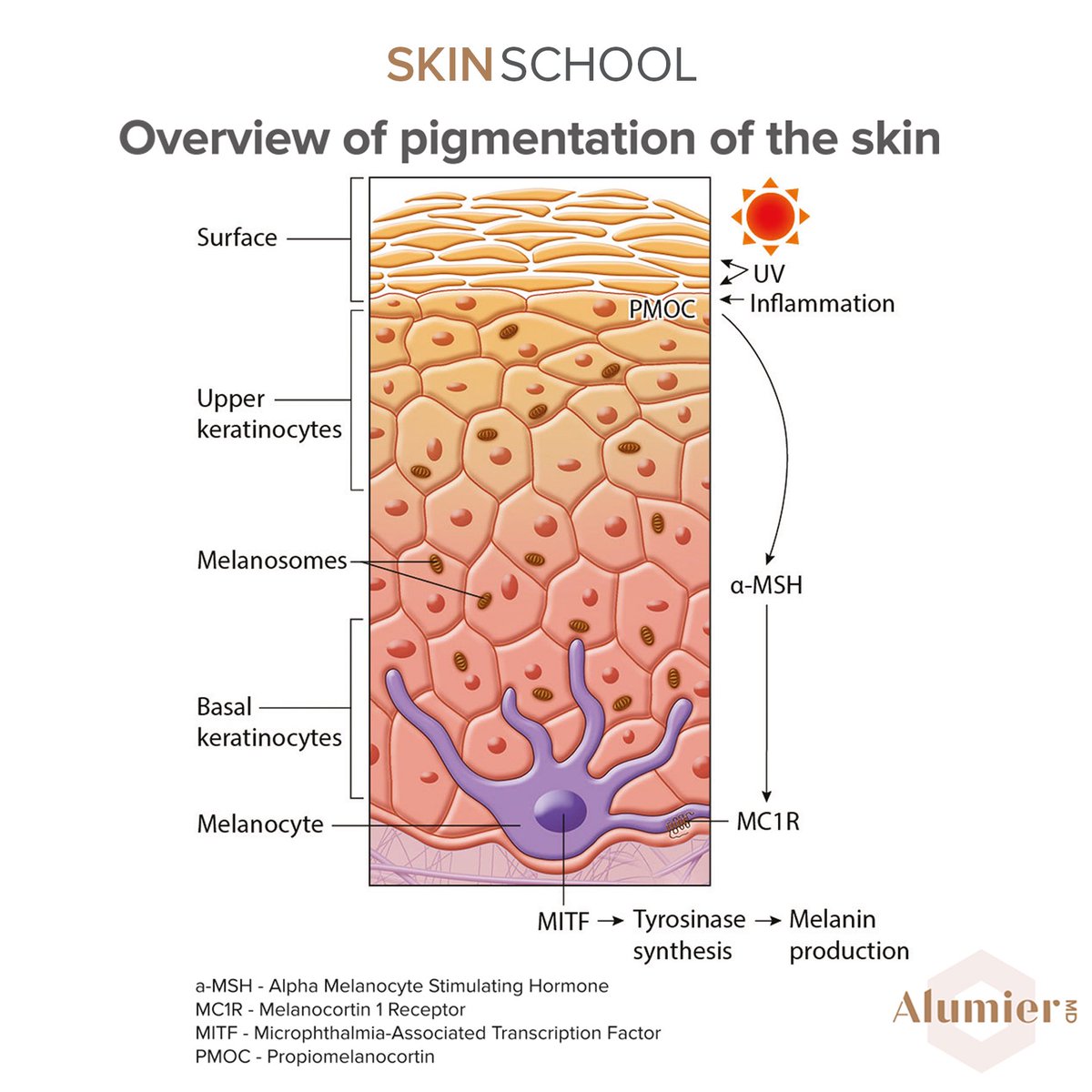Skin pigmentation issues can affect our appearance and confidence. While we often think about protecting our skin from UV rays, visible light from the sun and electronic screens can also contribute to pigmentation problems. By one of the most admired Dermatologist in the game, Dr. Pearl Grimes came out with a study on the effectiveness of iron oxide-containing formulations in safeguarding your skin against visible light-induced pigmentation.
The Hidden Threat: Visible Light and Skin Pigmentation
We often hear about the importance of sunscreen for UV protection, but recent research has shed light on another culprit—visible light. Can sunlight, as well as artificial light sources like smartphones and computers, which emit visible light can lead to pigmentation issues? Yes and no.
High Energy Visible Light & Melanin Stimulating Hormones
Recent evidence-based research has delved into the relationship between High-Energy Visible (HEV) light filters and their influence on melanin-stimulating hormone (MSH). These studies reveal that exposure to HEV light, can impact skin biology but more notably from the sun. Research shows that HEV light may stimulate the production of MSH, a key hormone involved in melanin production. How?
Opsins! Opsins are a family of light-sensitive proteins found in various parts of the body, including the skin. One particular opsin, known as OPN3, was discovered to play a unique role in skin cells that produce melanin especially for darker skin, the pigment responsible for skin color and protection against UV radiation. Unlike what was initially thought about opsins—that they mainly function in vision—OPN3 in skin cells doesn't rely on light to work. Instead, it interacts with another protein that controls melanin production, negatively regulating how much melanin is made. This finding is groundbreaking because it reveals a new way that our skin can control its pigment production, independent of light. This knowledge has lead to better ways to manage skin pigmentation issues, emphasizing the critical need for rigorous research and reliable sourcing in the development of skincare products. Reliable sourcing ensures the effectiveness and safety of skincare formulations, particularly those aimed at manipulating skin pigmentation pathways, like those involving OPN3. This insight not only broadens our understanding of skin physiology but also opens up new avenues for targeted aesthetic and therapeutic interventions with our skin at a molecular level.

The Study: Iron Oxide's Protective Power
A study published in the Journal of Drugs in Dermatology delves into the impact of iron oxide-containing formulations in combating visible light-induced skin pigmentation. Here are some key findings:
1. Iron Oxide as a Shield
Iron oxide, a mineral often used in sunscreens and makeup, has been found to act as a shield against the harmful effects of visible light. It helps to absorb and scatter the light, reducing its penetration into the skin. Let's be real, don't think that your little 15 SPF makeup is sufficient....cause it's not!
2. Protection Against Melasma & Other Pigmentation Conditions
Melasma tends to darken and become more pronounced when exposed to sunlight or visible light. Iron oxide formulations help prevent this darkening by reducing the penetration of visible light into the skin. As a result, individuals with melasma may experience less severe pigmentation issues and enjoy a more even skin tone.
3. Daily Defense
One of the essential takeaways from this research is the importance of daily use. Just as we apply sunscreen daily to guard against UV radiation, incorporating iron oxide-containing products into your skincare routine can help protect your skin from the daily onslaught of visible light.
Practical Tips for Skin Protection
Incorporating iron oxide-containing products into your skincare regimen is a proactive step in defending your skin. Here are some practical tips:
-
Choose a Quality Sunscreen: Look for sunscreens labeled "broad-spectrum" that contain iron oxide. These products can offer comprehensive protection against both UV and visible light. I love Mesoestetic Melan 130, Cotz Flawless Complexion Richly Tinted and Sonrei Clearly Zinq Tinted Mineral Gel.
-
Makeup with Added Benefits: Consider makeup products that include iron oxide, such as foundations and tinted moisturizers. In addition, not solely alone as your SPF for the love of God! They not only provide coverage but also offer added high quality protection against visible light. If you're not a makeup girly, try a tinted SPF.
-
Stay Consistent: Consistency is key. Apply these products daily, especially if you spend extended periods in front of screens or outdoors.
-
Consult a Pro: If you have specific skin concerns or pigmentation issues, consult a professional (especially a dermatologist if you think its melasma) for personalized guidance on incorporating iron oxide-containing products into your skincare routine.
Visible light-induced skin pigmentation is a concern for many, but with the right protective measures, you can minimize its effects. The study discussed here underscores the benefits of iron oxide-containing formulations in safeguarding your skin against visible light. By taking proactive steps and being mindful of your skincare choices, you can enjoy healthier, more radiant skin.
Remember, a well-informed skincare routine is your best defense against the visible light that threatens your complexion. Embrace the power of iron oxide and shield your skin from harm.
References
Dumbuya, H., Grimes, P., Lynch, S., Ji, K., Brahmachary, M., Zheng, Q., Bouez, C., & Wangari-Talbot, J. (2020). Impact of iron-oxide containing formulations against visible light-induced skin pigmentation in skin of color individuals. Journal of Drugs in Dermatology, 19(7), 712–717. https://doi.org/10.36849/jdd.2020.5032
Yardman-Frank, J. M., & Fisher, D. E. (2021). Skin pigmentation and its control: From ultraviolet radiation to stem cells. Experimental dermatology, 30(4), 560–571. https://doi.org/10.1111/exd.14260

